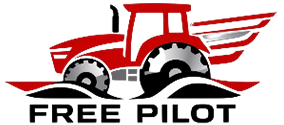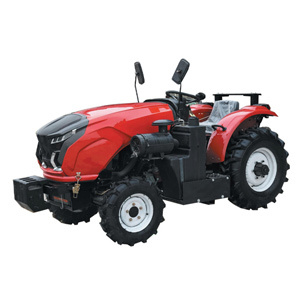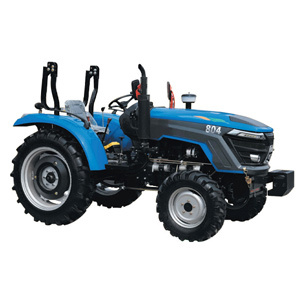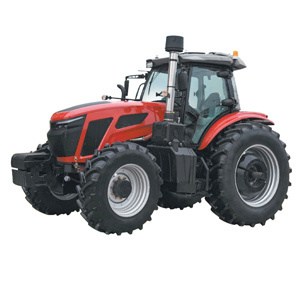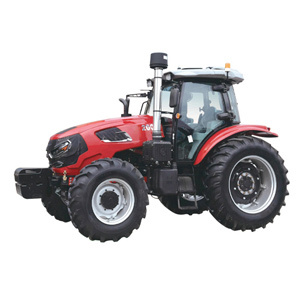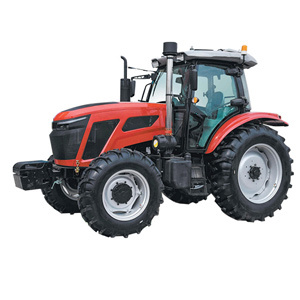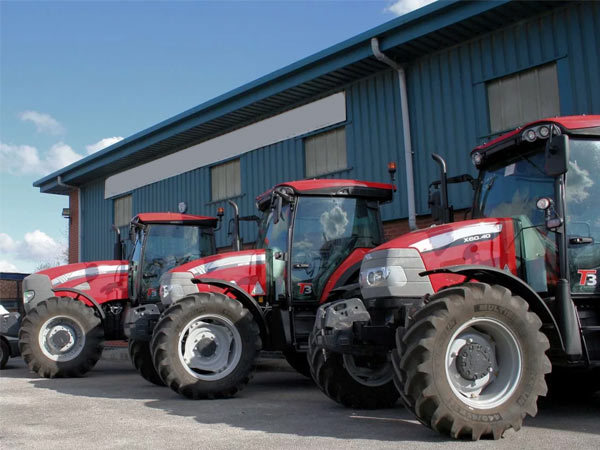Providing you with a one-stop solution for tractors
Why is 100 HP the "Goldilocks Horsepower"? An Analysis of Its Balance Between Efficiency and Optimal Value
Release time:
2025-11-21
In the vast landscape of tractor power, one segment consistently stands out as the most popular and versatile: the 100 horsepower class. It's not a random number but a calculated sweet spot that has earned its reputation as the "Goldilocks Horsepower"—not too little, not too much, but just right for a massive range of farms. Let's dissect why this power range so perfectly balances high-efficiency fieldwork with unbeatable cost-effectiveness.
1. The Power-to-Versatility Sweet Spot
At 100 HP, a tractor crosses a critical threshold of capability, becoming a true multi-role powerhouse without the bulk and cost of larger machines.
Implements Harmony: This horsepower level is powerful enough to efficiently operate the most common and critical farm implements. This includes:
5-furrow plows
4-5 meter rotary tillers
Large square balers and mid-sized round balers
High-capacity seeders and fertilizer spreaders
The "No-Compromise" Workflow: A farmer can use the same tractor for primary tillage, planting, haymaking, and hauling. This eliminates the need for a second, larger tractor for heavy work and the inefficiency of switching between a small and medium tractor for different tasks. It's the ultimate "do-it-all" machine for a mixed-operation farm.
2. The Optimal Balance of Performance and Affordability
The 100 HP range sits at the pinnacle of the price-to-performance curve.
Initial Investment: Stepping up from 75 HP to 100 HP offers a significant jump in capability for a proportional increase in cost. However, jumping from 100 HP to 130-150 HP often involves a much steeper price increase for a capability that many farms may not fully utilize, entering the realm of diminishing returns.
Operating Costs: A modern 100 HP tractor is typically equipped with a 4-6 cylinder engine that is highly efficient under load. It's powerful enough to work at a respectful pace without being overstressed, leading to good fuel economy and lower long-term wear compared to a smaller tractor working at its absolute limit. It avoids the chronic fuel gulping of a larger, under-utilized engine.
3. The Engineering and Infrastructure "Sweet Spot"
This horsepower class benefits from mature, widely-supported engineering and is perfectly sized for existing farm infrastructure.
Robust, Not Overbuilt: Tractors in this class are built on a robust platform that can handle the stresses of heavy draft work. They feature durable planetary final drives, strong hydraulics, and sturdy axles as standard, without the need for the exotic, ultra-heavy-duty components required for 200+ HP beasts, which add significant cost.
Logistical Ease: A 100 HP tractor is still a manageable size. It can easily navigate through standard 2.5-meter farm gates, fit in most sheds, and be transported on a common 2-axle trailer without requiring special permits or oversized hauling equipment. This reduces hidden costs and hassles.
4. The Ideal Bridge Between Ownership Models
The 100 HP tractor is the perfect solution for two major farming demographics:
For the Growing Farm: It is the logical and powerful "second tractor" for a farm expanding beyond the capacity of its first 50-75 HP utility tractor. It provides the necessary power for more serious fieldwork without the giant leap to a massive, specialized row-crop machine.
For the Contracting Farmer: For custom operators, efficiency and versatility are revenue drivers. A 100 HP tractor can handle a vast array of contracting jobs for different clients, from mowing and baling to light tillage and loader work, maximizing its earning potential and justifying its investment faster than a more specialized, higher-horsepower model.
5. Advanced Technology Becomes Accessible
At the 100 HP tier, manufacturers typically introduce their more advanced features as standard or affordable options.
Tech Integration: This is where you commonly find sophisticated transmissions like semi-powershift or even basic CVTs, advanced hydraulic systems (load-sensing), and compatibility with precision farming technology (auto-guidance, ISOBUS). These technologies further boost the efficiency and ease-of-use that define this class.
RELATED BLOG
